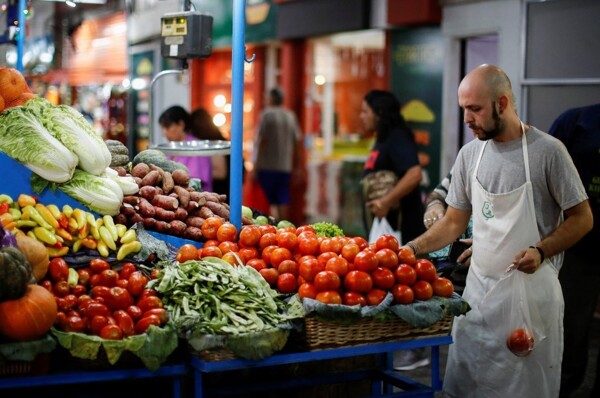
Buenos Aires, November 8, 2025 – Total News Agency-TNA-The Consumer Price Index of the City of Buenos Aires (IPCBA) registered an increase of 2.2% in October 2025, a figure identical to that of September, according to the report from the Institute of Statistics and Censuses of the City of Buenos Aires (IDECBA).
Year-on-year, Goods rose by 23.7% and Services reached 40.3%. The City of Buenos Aires government observes that, despite persisting at high levels, the monthly rate managed to remain stable compared to the previous month, which could be interpreted as a slight stability that contrasts with the exchange rate and electoral volatility observed in recent months.
Accumulated so far this year, Goods increased by 19.3% and Services by 29.2%. Year-on-year, this division accumulated a rise of 38.8%.
Meanwhile, Food and non-alcoholic beverages increased by 2.1% in the month and contributed 0.36 points to the index, with the largest segments being bread and cereals (2.7%) and fruits (8.6%). In the Health sector, growth was 2%, with an incidence of 0.19 points, with notable increases in prepaid medicine.
The report also shows that Goods increased by 2.2% in October, while Services did so by 2.1%. However, year-on-year inflation remains high and far from the range that many economists estimate as compatible with sustainable moderation.
The expectation of analysts surveyed by the Central Bank of the Argentine Republic (BCRA) projected precisely a price advance of 2.2% for October and an annual inflation for all of 2025 close to 29.6%, although current data suggest that this objective could move away if greater moderation is not observed in the remaining months.
This scenario poses three concrete challenges for public management: first, to contain the impact of transportation and energy services on household prices; second, to anticipate policies to moderate fresh foods and housing-related inputs, which continue to pressure core inflation; third, to design a comprehensive strategy that combines cost control, exchange rate containment, and tariff coordination, in a context of external uncertainty and a climate of legislative elections that can boost domestic demand.
For porteño households, the year-on-year inflation of 33.6% means that incomes must grow at least at that rate to maintain purchasing power.
These five divisions explained 64.8% of the monthly variation. In the Housing, water, electricity, gas and other fuels segment, which has a weight of 17.4% in the urban basket, a monthly increase of 2% was recorded, representing an incidence of 0.40 points in the general level.
With sensitive sectors such as Education (44.8% year-on-year) and Insurance and financial services (62% year-on-year) leading the increases, the pressure on family budgets is notable.
In summary, inflation in the City of Buenos Aires continues on a high trajectory, with a marginal moderation in the monthly pace, but a slight year-on-year deceleration that still does not represent a structural change. So far this year, the accumulated increase is 25.3%, while the year-on-year variation reaches 33.6%, which implies a slight deceleration of 1.4 points compared to the previous month.
The analysis of the local body indicates that the month's increase was largely driven by the sectors Housing, water, electricity, gas and other fuels; Food and non-alcoholic beverages; Restaurants and hotels; Transportation; and Health.
The year-on-year variation in that sector was 28.1%. Transportation recorded an increase of 1.9%, with an incidence of 0.21 points, motivated by the rise in fuels and lubricants—and a slight increase in automobiles—although the fall in air fares allowed to moderate its impact.
The end of the year and the first months of 2026 will be decisive to evaluate if this trend manages to consolidate or is reversed, affecting directly the economic perception of the citizens and the fiscal margins of the local government.













